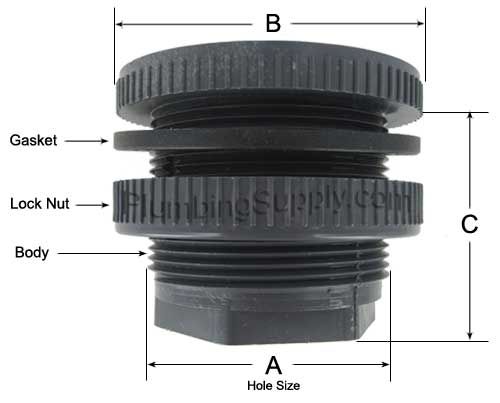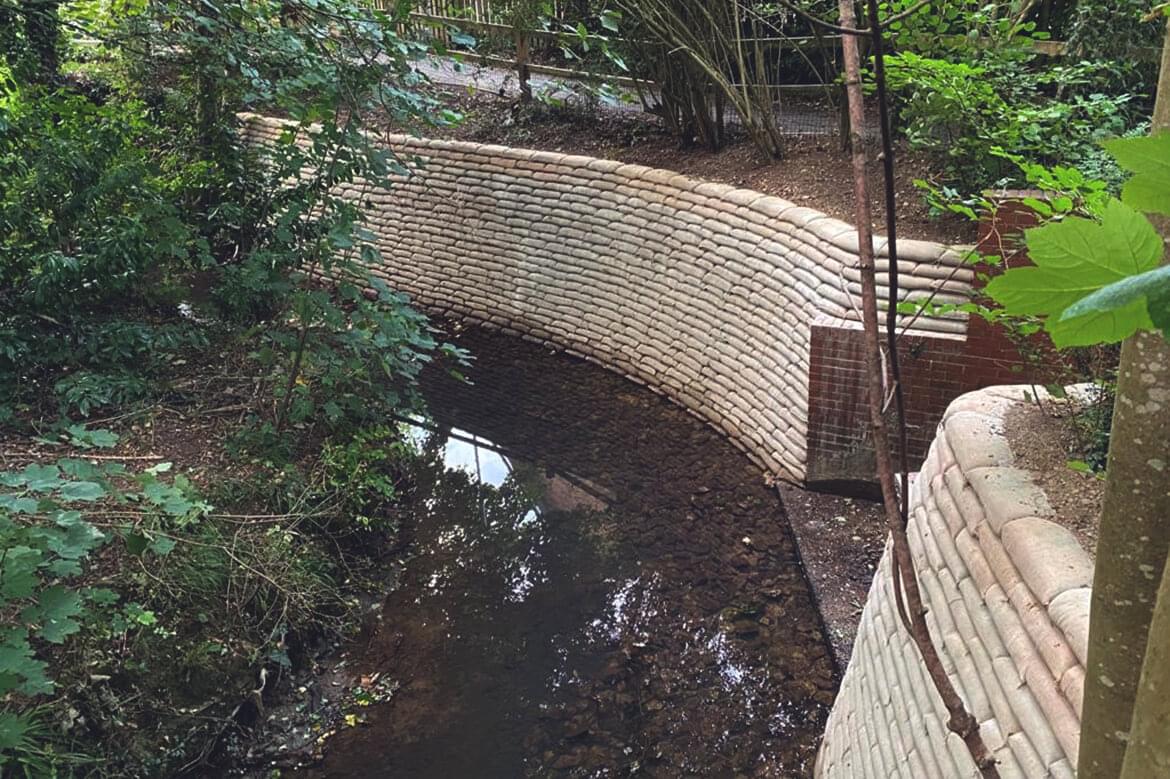Checking Out the Different Uses of Bulkhead Structures in Modern Style
Bulkhead structures play a significant role in contemporary design, offering both aesthetic and functional purposes. They can specify areas, boost storage space remedies, and boost lighting. In commercial settings, they serve as centerpieces that mirror brand identity - Bulkhead on Lake Livingston. Furthermore, their integration commonly sustains audio monitoring and lasting techniques. Recognizing the full scope of their applications reveals much regarding modern design fads and customer experience. What cutting-edge uses bulkheads might emerge in the future?
Defining Bulkhead Structures
Bulkhead structures play a crucial function in contemporary architecture, working as important components in different structure layouts. These structures are normally specified as increased systems or ceilings, often made use of to hide mechanical systems, circuitry, or plumbing. Bulkheads can be located in both domestic and industrial settings, where they offer a seamless mix of capability and appearances. Their style can integrate lighting components and various other ornamental elements, enhancing the overall visual charm of a space.
Commonly built from products such as metal, timber, or drywall, bulkheads can be tailored to fit the architectural design and needs of the building (Bulkhead on Lake Livingston). They offer not only to conceal unattractive framework however additionally to develop specified zones within open rooms. By managing the flow of a room, bulkheads add to the spatial organization, making them a considerable aspect of modern architectural technique. Their interpretation envelops both functional and aesthetic measurements.
Practical Applications in Residential Style
Bulkhead frameworks play a necessary role in residential style by assisting in space optimization methods that make the most of useful areas. They contribute aesthetic design components that boost the aesthetic appeal of living areas. Furthermore, these structures offer vital structural support solutions, making certain the honesty and safety and security of the home.
Room Optimization Strategies
As modern residential styles progressively focus on efficient use room, cutting-edge approaches arise to maximize capability without giving up aesthetics. One famous approach involves the integration of bulkhead frameworks, which can mark locations while providing important storage services. These frameworks can be utilized to produce vertical storage space units that improve both company and access. In addition, multi-functional furnishings, such as convertible couches and collapsible tables, enhances bulkhead styles, enabling rooms to adjust to differing needs. Open up layout better maximize spatial circulation, urging versatility in use. Integrating integrated shelving and recessed illumination within bulkheads additionally contributes to a streamlined atmosphere, making sure that every square inch of room is used successfully and harmoniously within the total style.
Aesthetic Design Aspects

Architectural Assistance Solutions
In contemporary property layout, a reliable structural support remedy is crucial for maintaining the stability of areas while optimizing design and functionality. Bulkhead structures play a significant function in this circumstance, functioning as both assistance and dividing components. They can conceal mechanical systems, such as pipes and electric wiring, while offering support to the ceiling and floor systems. By strategically placing bulkheads, designers can produce specified locations within open layout, improving use without endangering architectural security. In addition, these frameworks can fit lights components, adding to both visual appeals and functionality. To summarize, bulkhead frameworks are essential in property layout, offering versatile support remedies that enhance both the performance and aesthetic appeal of living areas.
Enhancing Aesthetics in Business Areas
When commercial spaces embrace innovative bulkhead structures, they not only define physical borders however likewise greatly improve the total aesthetic appeals of the setting. These architectural elements offer as aesthetic prime focus, drawing interest and creating a feeling of intrigue. By incorporating varied products such as metal, glass, or wood, bulkheads can show a brand's identification and goal, adding to a cohesive design.
The tactical positioning of bulkheads can adjust light and shadow, including depth and measurement to or else level rooms. This interaction can transform a commercial area right into an inviting ambience, motivating customer interaction. Furthermore, using shade and structure in bulkhead layout can evoke specific feelings, enhancing the total consumer experience. Eventually, the thoughtful assimilation of bulkhead structures boosts the visual charm of business areas, making them not just functional but also visually charming, therefore fostering a lasting impact on visitors.
Acoustic Efficiency and Audio Administration
Effective acoustic performance plays a vital role in modern-day architecture, particularly within industrial rooms where sound administration is important. Bulkhead frameworks can considerably boost acoustic qualities by taking in audio, reducing echo, and mitigating noise transfer between areas. These functions are specifically beneficial in atmospheres such as workplaces, theaters, and dining establishments, read review where clear interaction and a pleasurable auditory experience are paramount.
The strategic positioning and design of bulkheads can assist develop sound-buffer zones, efficiently isolating noisy locations from quieter ones. Products utilized in bulkhead building, such as soft finishes and acoustic panels, contribute to their sound-dampening capacities. Furthermore, the unification of bulkheads permits the integration of sound-absorbing aspects without compromising visual allure. By dealing with acoustic performance, designers can create harmonious environments that boost comfort, boost customer experience, and promote productivity, making bulkheads a vital element in the layout of modern commercial areas.
Integrating Bulkheads for Reliable Area Utilization
Although typically ignored, the integration of bulkheads in building style can significantly enhance room usage in modern buildings. These architectural elements serve several functional purposes, using a means to conceal mechanical systems, electrical wiring, and pipes without compromising aesthetic appeals. By purposefully placing bulkheads, architects can produce defined areas within open flooring strategies, thereby promoting far better organization and circulation.
Bulkheads can incorporate storage space options and lights features, making the most of the functionality of or else lost vertical room. In property settings, they may define zones such as kitchen areas or living locations, while in business rooms, they can enhance the effectiveness of designs by plainly noting paths and workplace.
Inevitably, the thoughtful integration of bulkheads contributes to a much more visually enticing and well organized setting, permitting adaptable spaces that can develop with the needs of their passengers. This approach not only optimizes area yet also promotes a more harmonious interaction in between kind and feature.
Bulkheads in Public Architecture

Architectural Visual Enhancements
While many building aspects go for functionality, bulkheads in public style offer a double purpose by enhancing aesthetic charm. These structures commonly produce visual rate of interest through their design, incorporating seamlessly with surrounding elements. By using numerous materials, textures, and shades, bulkheads can contribute to a special identity for public spaces, such as airports, museums, and libraries. Their tactical placement aids to define locations, directing site visitors while adding deepness to the overall style. Additionally, bulkheads can emphasize lighting, producing dynamic ambiences that change throughout the day. This visual improvement not just raises the site visitor experience but likewise cultivates a local color, making bulkheads a vital consideration in modern-day public style. In general, bulkheads embody the combination of type and feature.

Structural Support Solutions
As architects look for cutting-edge ways to boost the structural integrity of public areas, bulkheads emerge as essential components in the layout and building and construction process. These structures provide essential assistance, particularly in areas subject to heavy foot traffic or vibrant loads. By distributing weight uniformly, bulkheads help stop architectural failure while enabling functional design alternatives. In huge places, such as stadiums and convention centers, bulkheads are often incorporated right into the total architectural structure, making sure stability and security. Furthermore, they can help with the unification of energies and mechanical systems, contributing to the effectiveness of area usage. Inevitably, bulkheads stand for an important option in modern-day public architecture, enhancing both performance and security in community-focused environments.
Environmental Defense Procedures
Including ecological security actions into public architecture has actually come to be significantly crucial as urban designers prioritize sustainability alongside structural support. Bulkhead frameworks offer a double objective hereof, functioning as obstacles against erosion and flooding while at the same time enhancing the visual appeal of metropolitan landscapes. Their design usually consists of natural environments such as plants, which can boost air Resources high quality and provide habitats for wild animals. In addition, bulkheads can be engineered with absorptive products that enable water absorption, decreasing runoff and advertising groundwater recharge. This combination of ecological considerations not just preserves the setting but also fosters neighborhood resilience versus environment change. By utilizing bulkheads effectively, engineers add to sustainable urban growth that lines up with contemporary environmental objectives.
Future Trends in Bulkhead Design
Emerging trends in bulkhead layout show an expanding focus on sustainability, development, and performance in contemporary style. Developers are significantly including environment-friendly materials, such as recycled composites and bioplastics, to lower environmental impact. In addition, the integration of wise modern technology is becoming prevalent, allowing bulkheads to offer multi-functional objectives, including energy storage and environment control.
In city settings, modular bulkhead systems are gaining traction, providing adaptability in style and simplicity of installment. These systems can be adapted to various landscapes, enabling effective room application. Furthermore, aesthetic factors to consider are evolving; bulkheads are currently being made to boost visual charm, frequently including artistic elements that reverberate with regional culture.
As environment durability ends up review being a priority, future bulkhead designs will likely focus on flooding defense and stormwater administration, making certain structural integrity while attending to environmental challenges. This change symbolizes a holistic technique to architecture that meets both eco-friendly duties and human demands.
Often Asked Concerns
What Products Are Typically Utilized for Bulkhead Construction?
Typical products for bulkhead building and construction include concrete, steel, hardwood, and composite products. These alternatives offer longevity, structural stability, and resistance to ecological variables, making them appropriate for various applications in building and construction and design jobs.
How Do Bulkheads Influence Structure Energy Efficiency?
Bulkheads enhance developing energy effectiveness by supplying thermal insulation and lowering air leak (Bulkhead on Lake Livingston). They aid keep indoor temperatures, therefore decreasing home heating and cooling demands, ultimately causing lower power expenses and enhanced ecological sustainability
Exist Any Kind Of Building Codes Particular to Bulkhead Structures?
Yes, developing codes details to bulkhead frameworks exist, differing by place. These laws generally attend to security, architectural honesty, and access, ensuring that bulkheads satisfy called for requirements for building and layout within an offered jurisdiction.
Can Bulkheads Be Easily Customized or Eliminated Later On?
Bulkheads can usually be modified or eliminated, depending upon their style and construction. Such alterations might require mindful planning and adherence to building codes to assure structural honesty and safety are kept throughout the procedure.
What Are the Expenses Connected With Mounting Bulkhead Structures?
The costs related to installing bulkhead structures can differ considerably, usually affected by products, style intricacy, and labor. Normally, expenses vary from moderate to high, relying on the project's particular needs and place.
Bulkhead structures play an important role in modern-day design, serving as essential elements in numerous building styles. Bulkhead frameworks play a crucial function in domestic layout by helping with room optimization techniques that make best use of functional areas. Frequently ignored, the assimilation of bulkheads in building design can considerably boost room usage in modern-day structures. As engineers look for innovative ways to boost the architectural integrity of public spaces, bulkheads emerge as essential parts in the design and construction process. The expenses associated with mounting bulkhead frameworks can differ considerably, normally affected by materials, style complexity, and labor.